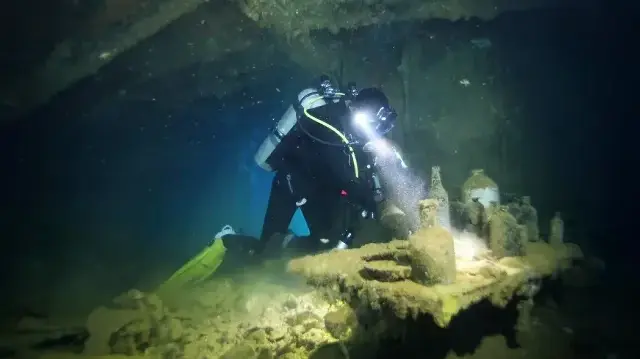WWII shipwrecks leaking toxic oil in Micronesia's Chuuk Lagoon

Dozens of Japanese warships sunk during World War II are leaking hazardous oil in Micronesia's Chuuk Lagoon, threatening marine ecosystems and local communities. Officials warn that climate change is accelerating the corrosion of these wrecks, which still hold millions of liters of fuel, creating a potential environmental disaster.
A fleet of Japanese warships from the Second World War is leaking toxic oil into the waters of Micronesia, posing a significant threat to the marine environment and coastal populations. The wrecks, located in Chuuk Lagoon, a former major Japanese naval base in the central Pacific, constitute the world's largest ship graveyard with over 60 sunken vessels and hundreds of aircraft.
A Ticking Environmental Time Bomb
Local officials have expressed grave concern that climate change effects, such as rising sea temperatures and more intense storms, are rapidly accelerating the corrosion of the 80-year-old hulls. A recent spill from a transport ship forced the declaration of a state of emergency after oil reached village shorelines, highlighting the immediate danger. Peter Aten, Chuuk’s commerce division chief, stated, "It's obvious that this is just the beginning," noting the catastrophic potential if all 63 wrecks began leaking simultaneously.
The Scale of the Problem and Cleanup Efforts
The volume of remaining pollutants is immense. While Japan’s Mine Action Service has extracted approximately 60,000 liters of oil since 2017, experts estimate that a staggering 22 million liters remain trapped within the decaying vessels. The issue first gained international attention in the early 2000s when local fishermen discovered oil slicks, prompting the then-Micronesian leader Manny Mori to famously label the wrecks a "ticking time bomb" and appeal for global assistance.
Seeking Solutions Through Heritage Status
In an effort to secure resources for the monumental cleanup task, Chuuk leaders have applied for the shipwreck site to be listed as a UNESCO World Heritage site. This designation aims to raise global awareness and attract the funding and expertise necessary to mitigate the looming ecological crisis and preserve the area, which is also a vital source of tourism revenue for the region.
Reklam yükleniyor...
Reklam yükleniyor...







Comments you share on our site are a valuable resource for other users. Please be respectful of different opinions and other users. Avoid using rude, aggressive, derogatory, or discriminatory language.